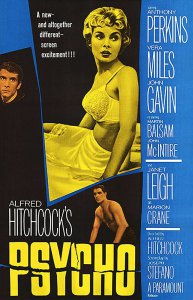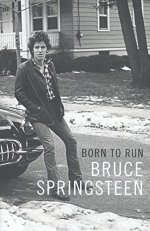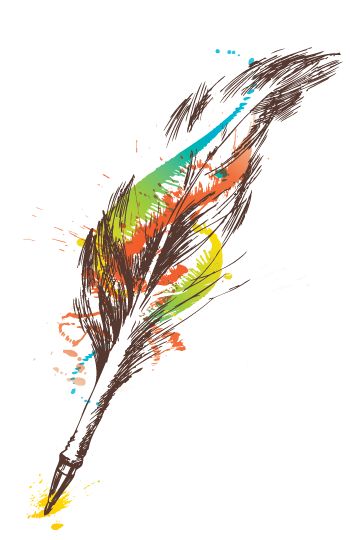 You’d be hard-pressed to find a movie more iconic and instantly recognisable than Alfred Hitchcock’s Psycho. The 1960 classic spawned countless imitators, remakes, sequels and spinoffs, and completely changed the way we see movies still today. With the upcoming release of 78/52, a documentary about Psycho’s infamous shower scene, we decided to take a look back at how the film became such a cultural touchstone inspiring filmmakers almost 60 years later.
You’d be hard-pressed to find a movie more iconic and instantly recognisable than Alfred Hitchcock’s Psycho. The 1960 classic spawned countless imitators, remakes, sequels and spinoffs, and completely changed the way we see movies still today. With the upcoming release of 78/52, a documentary about Psycho’s infamous shower scene, we decided to take a look back at how the film became such a cultural touchstone inspiring filmmakers almost 60 years later.
BEHIND THE SCENES
Psycho was based on a 1959 book of the same name by Robert Bloch, who was somewhat inspired by real-life serial killer Ed Gein. Hitchcock bought the rights to Bloch’s book for a paltry $9,500, and reportedly bought up as many copies as possible to stop people from reading the story and knowing the ‘twist.’
Hitchcock was working at Paramount at the time, and they weren’t initially interested. Hitchcock managed to get the budget down by offering to shoot the film in black and white with his Alfred Hitchcock Presents TV crew, and even took a pay cut for himself (in exchange for 60% of the film’s gross post-release, which was obviously a savvy move). Anthony Perkins and Vivian Leigh were both cast for unusually low rates, and Psycho was a go.
Everyone’s heard at least an anecdote or two about the making of the film, but not all of it was true. Hitchcock details much of the shoot in the book Hitchcock/Truffaut, and the book Alfred Hitchcock and the Making of Psycho also does its part to refute claims. Many say Janet Leigh was given ice cold water in the shower scene to make her screams more authentic, but she denied it. Designer Saul Bass has claimed he’s the real architect of the shower scene, but that’s also been dismissed.
Other famous bits of trivia are true: the stabbing sounds were created by a casaba melon, Hitchcock’s wife Alma Reville noticed Janet Leigh blinking in a frame during the editing process, Leigh herself was afraid of showers after watching the film back.
RELEASE
Despite the studio’s trepidation, Psycho was a massive success. Hitchcock had an exacting vision for the film and that included how the release should be rolled out. He did all the interviews and promo himself, out of fear Perkins or Leigh would accidentally reveal the end. He also gave as little information on the plot as possible to the press, which was almost completely unheard of at the time. If you’ve ever watched a trailer for a classic film, you know they gave out as much info as possible, often revealing the whole damn movie. Spoilers weren’t a thing back in 1960, they were just how you marketed a movie. “Come see this! They fall in love at the end!” But Hitchcock wanted to tease audiences long before J. J. Abrams thought of the mystery box.
This is also the reason he changed how the movie theatres themselves operate. Audiences used to show up whenever they felt like, catch the last half of the movie and wait to see the beginning at the next showing. See what I mean about spoilers not being a thing? But killing off what was presumed to be the main character 30 minutes into the film was a shocking twist that audiences wouldn’t see coming, and people wandering into the last half of the film would have that surprise ruined for them. So Hitchcock mandated a new policy that theatre owners could not permit latecomers, and this new policy, paired with a mysterious ad campaign, created a frenzy.
The movie was a hit with audiences, bringing in $15 million in its first year. It shattered box office records at the time, and was even nominated for four Oscars (winning none).
LEGACY
Aside from changing the way theatres operate and the way films are marketed (which is a big enough legacy on its own!), Psycho has inspired countless other films. The shower scene and score alone have been replicated (and parodied!) a million times, popping up everywhere from The Simpsons to last year’s Scream Queens, with Janet Leigh’s daughter Jamie Lee Curtis in the shower.
It’s argued that Psycho is the first ever slasher film, which paved the way for everything from Halloween to Nightmare on Elm Street in one way or another. It even inspired more direct copycats, like Brian DePalma’s Dressed to Kill, Mel Brook’s parody High Anxiety, and of course Gus Van Sant’s 1998 shot for shot remake. Psycho also spawned a few forgettable sequels, a TV spin-off in Bates Motel and Hitchcock, a truly awful biopic based on the book Alfred Hitchcock and the Making of Psycho. And now it’s inspired yet another film in 78/52, the documentary that dissects the infamous shower scene once more.
It’s almost 60 years since Psycho’s been released, and it’s still being talked about and obsessed over to this day. Not bad for a low budget horror movie.
- More





